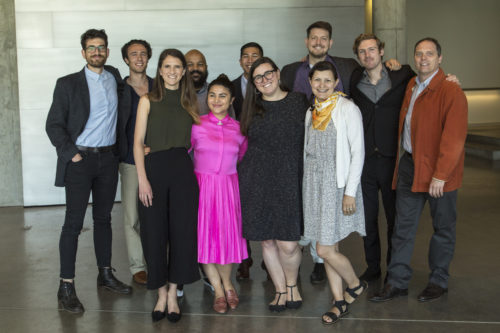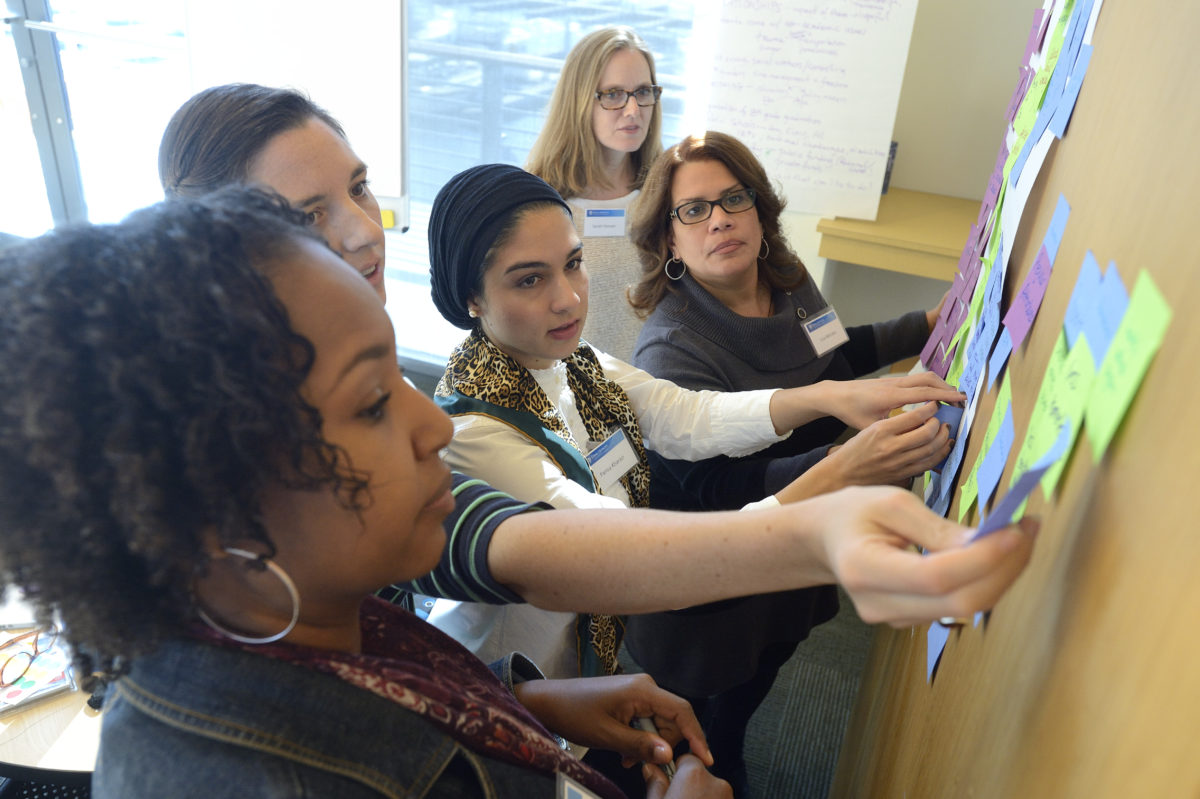As the world grows more complex, the problems that businesses must solve for do as well.
Inspired to uncover how design could play a role in solving business problems, the academic leadership at the Maryland Institute College of Art (MICA) and Johns Hopkins University (JHU) Carey Business School collaborated to create the Design Leadership (MA/MBA) — a dual degree program that would pair the creative principles of design with the rigor of an MBA.
The program’s unique format enables students to simultaneously earn two graduate degrees, with access to the networks and resources of both renowned schools, while setting them up for a career that could apply to nearly any industry.
At its core, the Design Leadership (MA/MBA) is the embodiment of collaboration between the two higher-ed institutions, but it also functions on the cross-discipline collaboration of students with a diverse set of backgrounds and approaches to problem-solving.
The idea originated after faculty at the Carey Business School invited MICA’s design students to attend one of its business courses, Competitive Advantage.
“As the leaders of JHU and MICA, we thought it would be interesting if the class included design students to see if the dynamic in solving problems would change — because we’d be bringing in different kinds of thinkers, doers and intellects with different cognitive approaches,” said David Gracyalny, vice provost for open studies at MICA. “Afterwards, everyone felt like something really important had taken place.”
The Design Leadership (MA/MBA) is based on the practice of design thinking — an innovation process grounded in human-centered design. Using an iterative, collaborative approach to idea development, designers use insights from human behavior to think about how to best build desirable products and services that are also technologically and economically feasible.

One of the highlights of the curriculum is its focus on giving students the chance to get their hands dirty in the business world.
“If students can’t take the things we’ve taught them in business and apply them, they will only go so far,” said Kevin Frick, vice dean for education at the Carey Business School. “We expose them to the real world and create situations that students can apply outside the classroom.”
A good example of how the program executes this is through its chapter of national nonprofit Design for America. The idea incubator challenges students to use what they’re learning to come up with solutions for a real business or social issue, which they then present to an actual company.
“The collection of all the courses makes the program special, but through Design for America I was able to apply all of the knowledge I gained from my classes,” said recent Design Leadership graduate Kat Ward. “It was a full 16-week consulting project. It made my entire experience worthwhile.”
Since her graduation in May, Ward is already a design strategist at KPMG in the Harbor East neighborhood of Baltimore and consults for Fortune 500 companies across a wide breadth of industries.
Graduating in 2016, Brandon Ball, currently a full-time designer at design and innovation firm Fjord, can attest to the relevance of the program’s curriculum.
“I use what I learned [in the program] on an everyday basis,” said Ball. At Fjord, “I do traditional business strategy with a human-centered approach: ethnographic research, market research, human-centered trends, etc. My job is to create a business case for what we want to design, but also how to make it scalable and sustainable.”
In Ball’s experience, the dual degree had an immediate impact on his ability to get work after graduation.
“I didn’t have to do too much searching to find a job,” said Ball. “Design overall is very valuable in the market right now. This hybrid role of business and design is in demand.”
Indeed, leadership at JHU reports that 89% of the program’s graduates have accepted full-time or internship positions within four months of graduation, and in 2018, grads earned an average salary base of $106,375. And while 67% of grads have gone on to work in consulting roles and 33% in hospitality, there’s always room to get creative with how to apply your dual degree and carve your own path.
Learn more about Design Leadership (MA/MBA) program and how to apply






